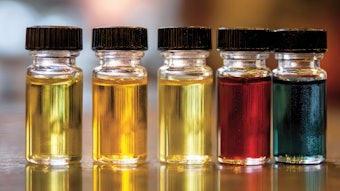It has long been known that optically active stereoisomers--optical antipodes or enantiomers--can have different sensory qualities. The most illustrative examples of this phenomenon are the enantiomers of carvone and menthol.
Especially during the last decade the interest in the separation and determination of the sensory properties of natural enantiomers has resulted in a large number of publications.
This increasing interest was initiated by the development of new chromatographic separation techniques on optically active stationary phases and arose from the need to prove the naturalness of certain enantiomers.










